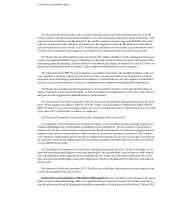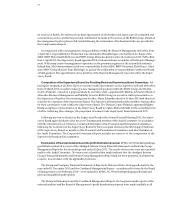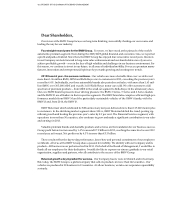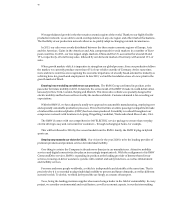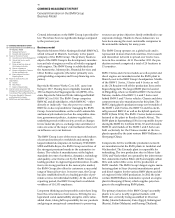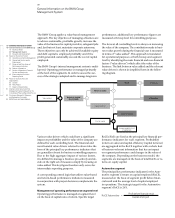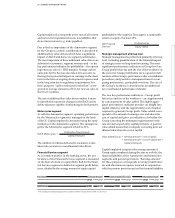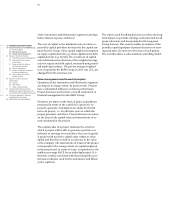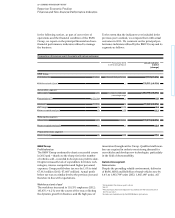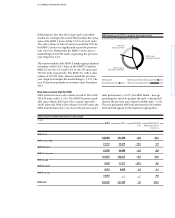BMW 2013 Annual Report Download - page 21
Download and view the complete annual report
Please find page 21 of the 2013 BMW annual report below. You can navigate through the pages in the report by either clicking on the pages listed below, or by using the keyword search tool below to find specific information within the annual report.
21 COMBINED MANAGEMENT REPORT
Capital employed corresponds to the sum of all current
and non-current operational assets, less liabilities that
do not incur interest (e. g. trade payables).
Due to the key importance of the Automotive segment
for the Group as a whole, consideration is also given to
additional key value drivers which have a significant
impact on RoCE and hence on segment performance.
The most important of these additional value drivers are
deliveries to customers, segment revenues and – as the
key performance indicator for profitability – the operat-
ing return on sales (i.e. EBIT margin). Average carbon
emissions for the fleet are also taken
into account, re-
flecting their potential impact on earnings
in the short
term in the form of ongoing development expenses and
in the long term due to regulatory requirements. For
these purposes “carbon emissions for the fleet” corre-
sponds to average emissions of CO2 for new car sales in
the EU-27 countries.
The use of additional key value drivers makes it easier
to identify the reasons for changes in the RoCE and to
define measures capable of influencing its development.
Motorcycles segment
As with the Automotive segment, operating performance
for the Motorcycles segment is managed on the basis
of RoCE. Capital employed is measured using the same
method as in the Automotive segment. The strategic tar-
get for the Motorcycles segment’s RoCE is 26 %.
Profit before financial result
RoCE Motorcycles
= Capital employed
The number of vehicles delivered to customers is also
taken into account as a non-financial value driver.
Financial Services segment
As is common practice in the banking sector, the per-
formance of the Financial Services segment is measured
on the basis of return on equity (RoE). RoE for the Finan-
cial
Services segment is defined as segment profit before
taxes, divided by the average amount of equity capital
attributable to the segment. The target is a sustainable
return on equity of at least 18 %.
RoE Financial
Profit before tax
Services =
Equity capital
Strategic management at Group level
Strategic management is performed primarily at Group
level, including quantification of the financial impact
of
strategic issues on long-term forecasting. The most
significant performance indicators at Group level are
Group profit before tax and the size of the workforce at
the year end. Group profit before tax is a good overall
measure of the Group’s performance after consolidation
procedures, and provides a transparent basis for com-
paring performance, particularly over time. The size of
the Group’s workforce is monitored as an additional
key non-financial performance indicator.
The two key performance indicators – Group profit
before tax and size of the workforce – are supplemented
by a measurement of value added. This highly
aggre-
gated performance indicator provides an insight into
capital efficiency and the (opportunity) cost of capital
required to generate Group profit. Value added corre-
sponds
to the amount of earnings over and above the
cost of capital and gives an indication of whether the
Group is meeting the minimum requirements for the
rate of return expected by capital providers. A positive
value added means that a company is creating more ad-
ditional value than the cost of capital.
Value added Group = earnings amount – cost of capital
= earnings amount – (cost of capital rate ×
capital employed)
Capital employed comprises the average amount of
Group equity employed during the year as a whole, the
financial liabilities of the Automotive and Motorcycles
segments and pension provisions. “Earnings amount”
for these purposes corresponds to Group profit before
tax and after interest expense incurred in conjunction
with the pension provision and on the financial liabilities
in € million Earnings amount* Cost of capital* (EC + DC) Value added Group*
2013 2012 2013 2012 2013 2012
BMW Group 8,320 8,113 4,666 4,228 3,654 3,885
* Prior year figures have been adjusted in accordance with the revised version of IAS 19, see note 7.


